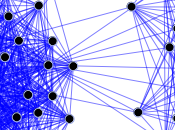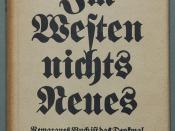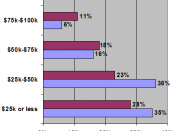Social Power Brings Corruption
The two most prominent social classes in the World War I novel, "All Quiet on the Western Front" are categorized from the lowest social, the platoon leader and the military officials to the highest social class, the Kaiser. The thesis of this paper is that two extreme class levels bring corruption and social disorder which Remarque points out directly in the actions of the officials and the higher order.
The bottom level of social class represented in "All Quiet on the Western Front" is the platoon leader. He is given a group of soldiers to train. In addition to training, his abusive authority was quite astonishing as the author points out. One of the main authority figures in the novel is Corporal Himmelstoss. He trained the newly enlisted soldiers in the ways of war. He is described as resembling Louis Napoleon in the novel; "a small undersized fellow with a foxy, waxed mustache."
(Remarque 23). Immediately the description of Himelstoss triggers an image of a short, power-hungry figure. In each social level an authority figure emerges and sets them apart from the rest. His image is further emphasized in the statement, "He had a special dislike of Kropp, Tjaden, Weshus, and me, because he sensed a quiet defiance." (Remarque 23) Himmelstoss's dislikes for these soldiers is not directly related to the fact that he supposedly, "sensed defiance," but more so to his will to misuse his authority in ways that resulted in the soldiers lack of respect. His actions show that his social class level is represented in his actions and attitude towards his troops. He focuses his efforts on Tjaden, the "skinny locksmith...who is and always will be as thin as a rake." (Remarque 2-3). To make up for his lack...


